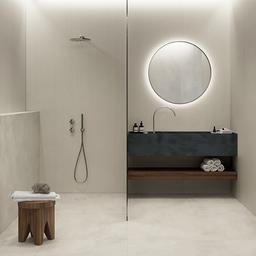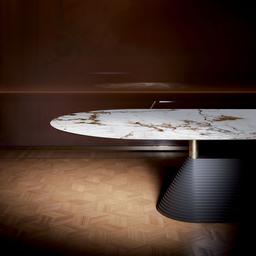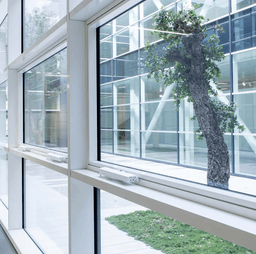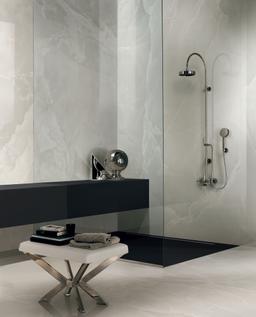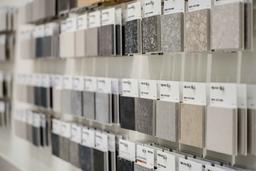CEDIT
L'arte dell'ambiente italiano.
"The culture of beauty, art, architecture, and design are part of CEDIT's DNA."
After an extraordinary season marked by successful collaborations and an intense activity of technological and stylistic experimentation, Florim relaunches CEDIT.
Born from the desire to explore new expressive modes that could contribute to the culture of Italian design, this company has left an indelible mark on the 20th-century landscape.
Our five values: a story told by CEDIT
Defining style through a relentless quest for invention, to reveal an expressiveness that knows no bounds.
The creation of a unique language, shaped by five values.
C
as Culture
Curators of knowledge, cultivated through creative dialogues and exchanges of experiences.
E
as Ethics
The responsibility to protect the environment, Nature, the future, for the good of all.
D
as Design
Investing in research, the most sublime form of knowledge.
Being the architects of innovation, the protagonists of a process that takes us further and further.
I
as Identity
1947: the tradition of the brand begins.
Timeless values and craftsmanship in constant evolution, expressing a unique identity.
A tradition that is still alive around us today.
T
as Talent
The art of Made in Italy.
Through imagination, through passion, through life…
The milestones of CEDIT's history, from 1947 to today.
1947
CEDIL - Ceramica di Lurago d’Erba s.p.a. begins its activity. The company produces white-body glazed tiles for wall coverings in a range of uniform colors. The following year, the company introduces new formats and starts producing collections developed in collaboration with some of the rising stars of creativity of the time: the first collection resulting from this strategy is designed by Albe Steiner.
1954
The path taken led in 1954 to the conception, production, and marketing of customized ceramic elements, such as the iconic "SZ1" series designed by architects Marco Zanuso and Alberto Scarzella, characterized by an original curvilinear geometry; the modularity of the elements and the decorative patterns that compose it will become part of the brand's distinctive vocabulary.
1955
In 1955, CEDIL acquired Ceramiche Dester S.p.A. and founded CEDIS Ceramiche di Sicilia s.n.c. based in Palermo, in a new production facility designed by Marco Zanuso.
1956
The new group - CEDIL-CEDIS - had more than 300 employees by the end of the 1950s; from the merger of these two companies, CEDIT S.p.A. was born, visually characterized by a new logo designed by Albe Steiner.
1961
In collaboration with ADI, the Association for Industrial Design, CEDIT creates the "Golden Tile" award, a recognition given to the best Italian design in ceramic production. On the occasion of the first edition, the award is given to Maria & Gramigna for the "Valdieri" tile; in 1966, the year in which the award is given for the last time, the prize goes to the "Elle" tile, designed by Cini Boeri.
1968
Two paradigm shifts occur in the world of tile production. The first change is due to the "Collection 68," a collection characterized by the versatility of wall design that allows for a multitude of compositional themes starting from a single motif; the collection is the work of artists of the caliber of Enzo Mari, Ettore Sottsass, Bob Noorda, Michele Provinciali, Joshitaka Sakuma, Bruno Binosi, Gilio Confalonieri, Franca Helg & Antonio Piva, Sergio Asti, and Marco Zanuso.
1968
The second change consists of exploring a research area never previously ventured into: combining tiles with a series of functional and decorative objects. This exercise would engage some of the most important designers of the time: Ettore Sottsass, Gruppo Dam, Sergio Asti, and Achille and Pier Giacomo Castiglioni. The design of the plywood packaging used for these objects was created by Albe Steiner.
1970
Throughout the 1970s, CEDIT continued to follow this interdisciplinary approach, maintaining a certain stylistic distance from its competitors. Another emblematic project of this research was the exhibition “16 Wall Games,” hosted in 1970 at the company’s exhibition center in Milan, located at Via Verri 4.
1973
With the unusual “Painters Series,” the brand invites a diverse group of international artists to explore the multiple decorative possibilities of surfaces, including Emilio Scanavino, Edival Ramosa, Mimmo Rotella, Mario De Luigi, Ross Littell, Guy Harloff, Marcello Pirro, Gino Marotta, and Ken Scott. The preface of the catalog presenting the collection will be written by Gio Ponti.
1980
In the 1980s, the extraordinary and essential contribution of Sottsass Associati materialized in the design of a series of products where the expressive use of abstract geometric decorations was achieved through the multiplication of tiny graphic profiles—an intuition that foreshadowed future trends that would revolutionize the world of ceramic coverings. Over time, this creative collaboration expanded, leading to the creation of “The Milan Style,” a new CEDIT brand whose artistic direction would be entrusted to Ettore Sottsass.
1994
The “41 Colors” collection aims to represent the alphabet through which one of the timeless languages of design is expressed: color. A great lover of ceramics and its artisanal unpredictability, Ettore Sottsass found with CEDIT a way to convey his personal sense of color to the wider public through an industrial series. This collection will inspire one of CEDIT’s contemporary design proposals.
2016
In line with the tradition of a brand that has helped to write the history of ceramic coverings, new contemporary talents are now called upon to design the products that will support the company’s relaunch promoted by Florim. Referring back to Gio Ponti’s preface for the 1973 catalog and his invitation to “expand” the influence of tiles to the scale of the environment, CEDIT draws on Florim Group’s experience in producing large ceramic slabs to create surfaces capable of innovating the concept of architectural space through dialogue with human space. Over time, the company’s collections will be united in a new ceramic design, inspired by the idea of creation as an inexhaustible source of possibilities.
The Authors
The CEDIT of today and the near future revives and relaunches the attitude of collaborating with some of the most interesting names in contemporary creativity, giving rise to a series of ceramic collections designed by Italian authors, each of whom is defined by an original stylistic trait.
